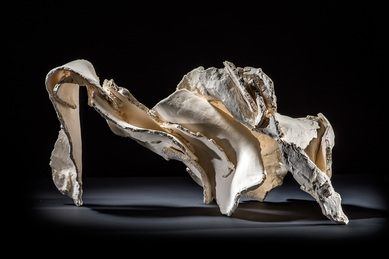
When Chen’s mother became diagnosed with Parkinson’s disease he began to reevaluate what he was doing with his art and began observing his relationship with his mother. This active observation influenced unique works of art such as this one. As he began to revisit his past, he was able to accumulate his experiences of having an Eastern heritage while learning and practicing art in the United States. Chen believes that those experiences have helped him become the artist he is today, but realized that no conventional technique or use of material could help express his relationship with his mother.
Many techniques have been taught to artist students with various materials presented by an instructor, but those come with limitations, as is the nature of many regulated things in life. So, Chen yearned to grow beyond such limitations in respect of his mother and began experimenting with porcelain. Expressing such a unique relationship between a mother and her child required Chen to dig deep and discover how to use and shape a material for this expression.
“Every material has a limitation, but every material has an untapped potential,” states Chen. In contemporary art the material is the concept, and Chen has broke through the material’s limitations by finding it’s potential to accurately represent the maternal relationship between a mother and her child. Since the material is the concept and the concept is maternal love one could make the argument that this literally is maternal love and not just a mere representation of it.
Just as maternal love is, Mother and Child goes beyond the platonic understanding of this relationship through the various, physical aspects of the artwork. It isn’t a portrait conveying an instance of maternal love, nor is it a sculpted statue of his mother as a memorial. Mother and Child is the tangible representation of maternal love through its twists and turns, rough patches, size, and unity of message and pieces.

 RSS Feed
RSS Feed